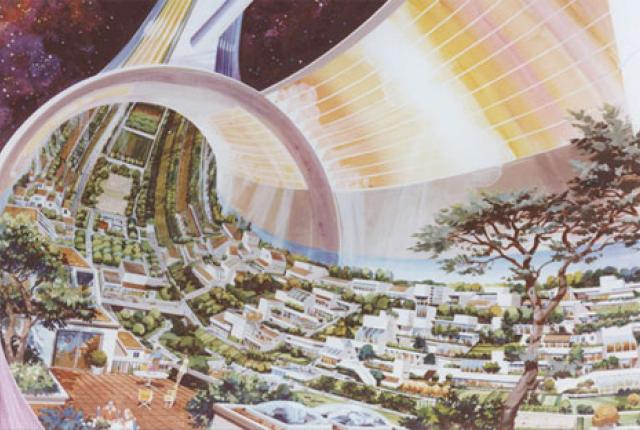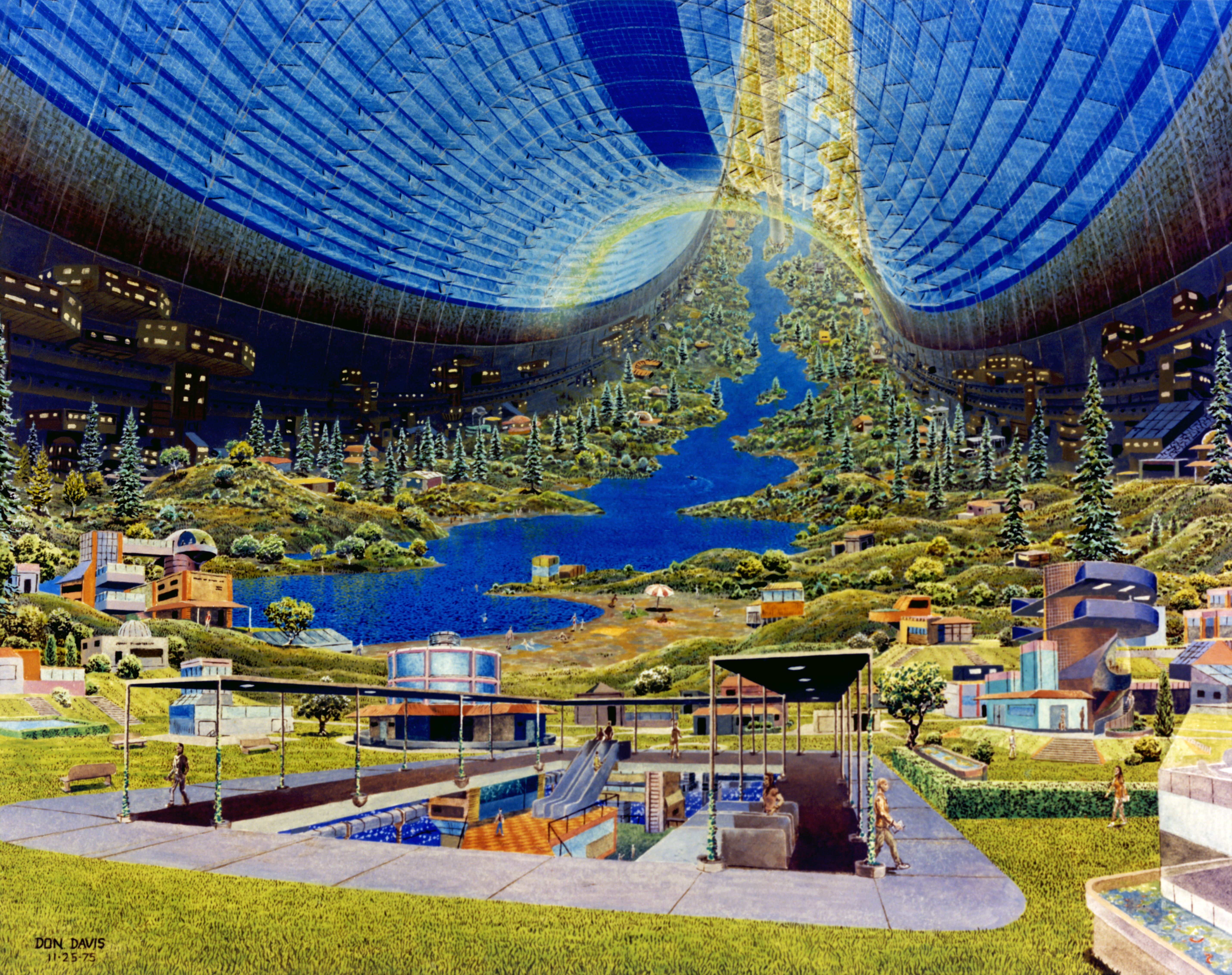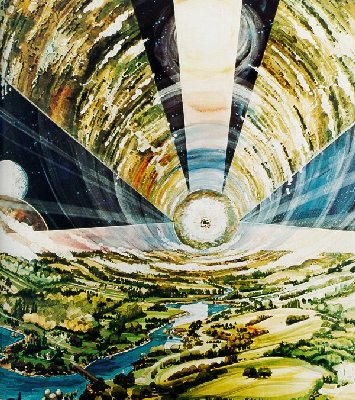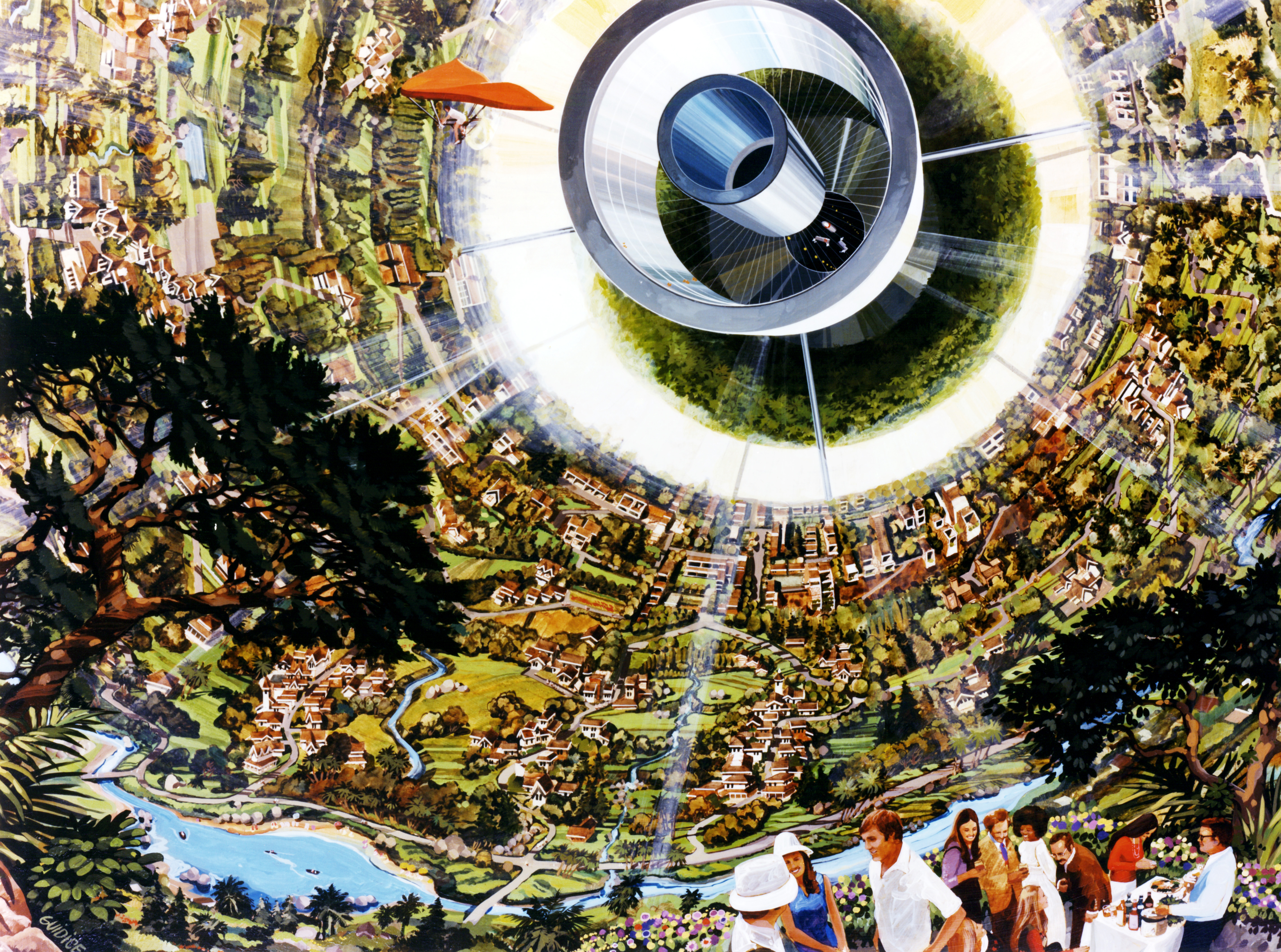
In the earlier post about Freeman Dyson’s outré dreams for space colonization, I mentioned he thought too restrained the planetary-settlement plans of fellow Princeton physicist Gerard K. O’Neill. Here’s a bit from a 1975 interview Stewart Brand conducted with O’Neill on the topic:
“Stewart Brand::
What would it take for you to become a fulltime space colonizer?
Gerard O’Neill:
Well, if the president came to me and said, ‘Here is X-billion dollars, we’re going to go ahead with the thing and we want you to be involved with it.’ That would sure fetch me.
Stewart Brand:
Suppose NASA said ‘Here’s 5 years of personal salary to administer the growth of this program?’
Gerard O’Neill:
That’s not enough. I have a deep suspicion of governments, and really – although I’m not politically active-I know enough about politics to be very suspicious of it; I think I would have to see a really substantial committed kind of program going. I don’t mean at the spending level of billions of dollars, but I’d like to see something where there’s a very solid commitment to continue in the same sense as there was in the Apollo program.
Stewart Brand:
Of the level of Kennedy saying, ‘We’re going to be on the Moon in this decade’ For some politician to make this go, he’s going to have to say ‘by the year so-and so.’ What year is that?
Gerard O’Neill:
Arthur Kantrowitz, the president of AFCO-Everett was out visiting us a few days ago. He happens to be quite enthusiastic about this work, and he says that his answer for things of that kind is to say, ‘You’ll have the result ten years after you’ve stopped laughing,’ which is I think, a pretty good answer. The most responsible answer I could give is to say that if I really had the responsibility for getting it done by a certain time and the authority to do it in what I would consider the right way, then I would be willing to make a very strong commitment that it could be done in 15 years from time-zero. Whatever that time-zero is.
Stewart Brand:
This is Model One with an extra-territorial population of what?
Gerard O’Neill:
Yes, Model One. Roughly 10,000 people. If you look at the growth rates that you could get from that first one, then you’d probably be talking about a quarter of a million people by the year 2,000. Because you’ll be going up very fast after you get the first beachhead.
Stewart Brand:
And your graph I saw in Washington suggested a net population decrease on the planet’s surface by…
Gerard O’Neill:
I think the turn-over there is about 2018. Now that was based – first of all, I don’t make it as a prediction – it was indicated as a technical possibility, and it was based on a time-zero of essentially now, which is certainly unrealistic politically, and a completion date of 13 years, so that would put Model One in place by 1988. Maybe you could even do it from now, technically, but it’s probably more reasonable to say 13-20 years from a time of decision.
Stewart Brand:
Do you think there’s no way to get the toothpaste back in the tube at this point…. that the idea is inevitable?
Gerard O’Neill:
There are other possibilities. Civilization could tear itself apart with energy shortages, population pressures, and running out of materials. Everything could become much more militaristic, and the whole world might get to be more of an armed camp. Things of this kind might just not be done because no nation would dare to divert that much money away from military efforts. or without war, it could be that the world will become poor, to the point where it can’t afford to try things like this.
Of course, if neither of those possibilities occurs, then I do think there is some sort of inevitability about it. With that, of course, you can’t associate a time-scale. It could be a long time.
Stewart Brand:
Who resists the idea in any large way? If anyone.
Gerard O’Neill:
Well there was a while when I thought that elderly and famous professors of physics were the greatest opponents. . . In fact of all the mail I’ve gotten only about 1% has been in opposition to it.
Stewart Brand:
And what’s your short roster of planetary problems that will be solved by this particular technique? Energy, population. . .
Gerard O’Neill:
Well, yes, but by phrasing the question in that way it’s difficult for me to answer except with a prediction or promise, and that’s something that no decent scientist likes to make. I think it’s very wrong to assume that something like this is going to promise happiness to all people, because people manage to make themselves unhappy in almost any circumstances.”





